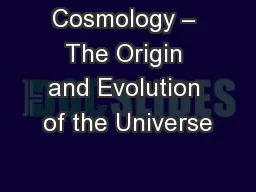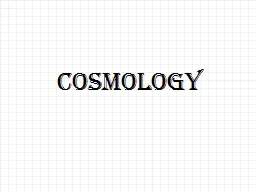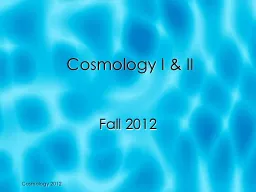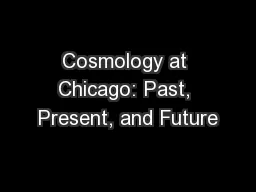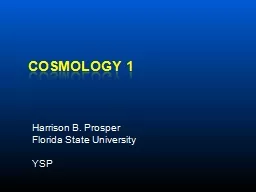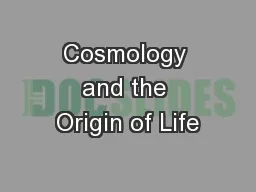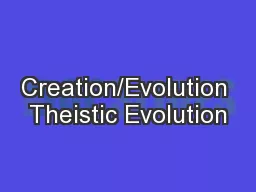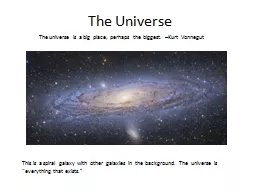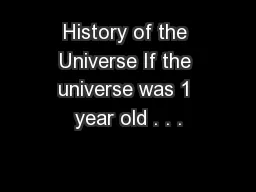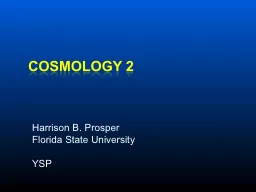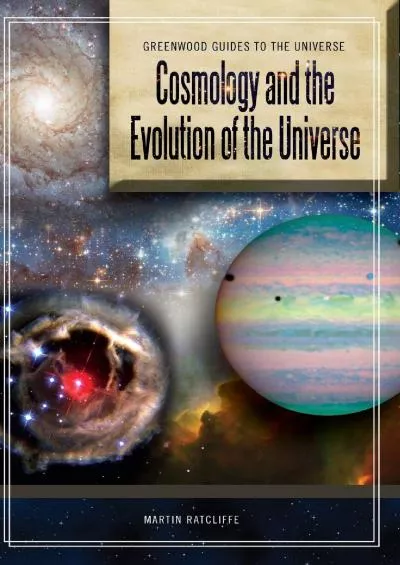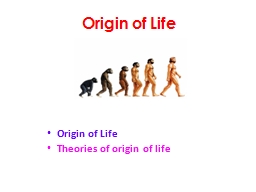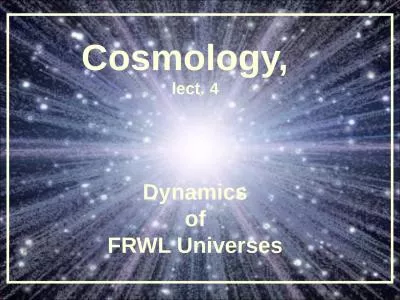PPT-Cosmology – The Origin and Evolution of the Universe
Author : min-jolicoeur | Published Date : 2015-10-27
Expanding Universe consistent w a Big Bang Olbers Paradox Large Scale Structure and relation to Dark Matter Evidence for the Big Bang The Cosmic Microwave Background
Presentation Embed Code
Download Presentation
Download Presentation The PPT/PDF document "Cosmology – The Origin and Evolution o..." is the property of its rightful owner. Permission is granted to download and print the materials on this website for personal, non-commercial use only, and to display it on your personal computer provided you do not modify the materials and that you retain all copyright notices contained in the materials. By downloading content from our website, you accept the terms of this agreement.
Cosmology – The Origin and Evolution of the Universe: Transcript
Download Rules Of Document
"Cosmology – The Origin and Evolution of the Universe"The content belongs to its owner. You may download and print it for personal use, without modification, and keep all copyright notices. By downloading, you agree to these terms.
Related Documents

